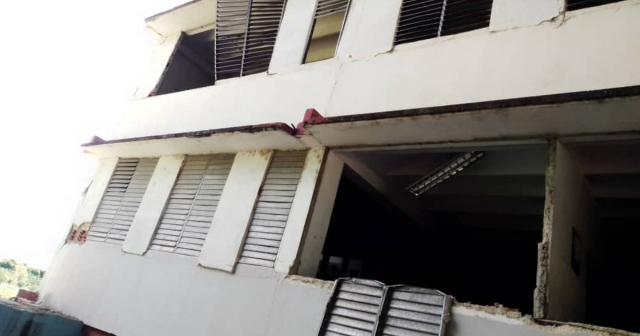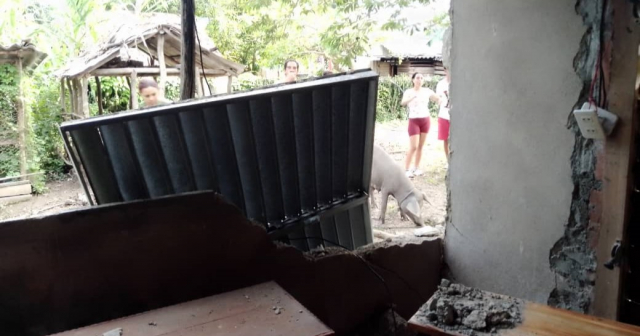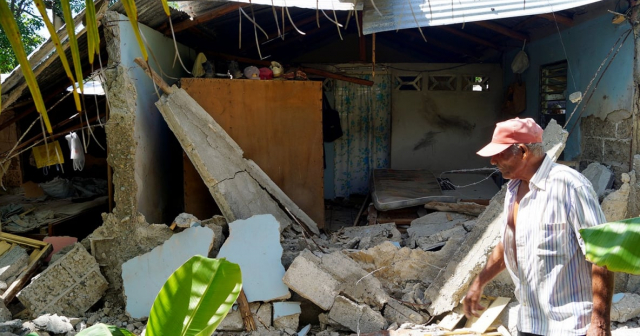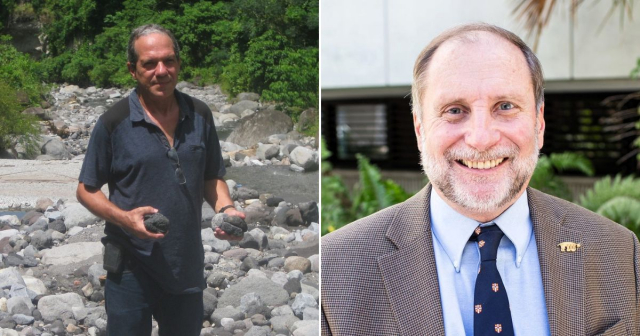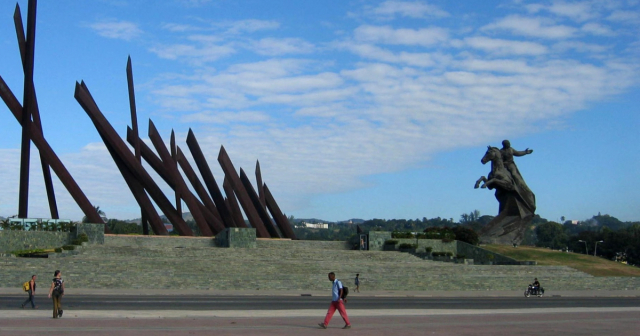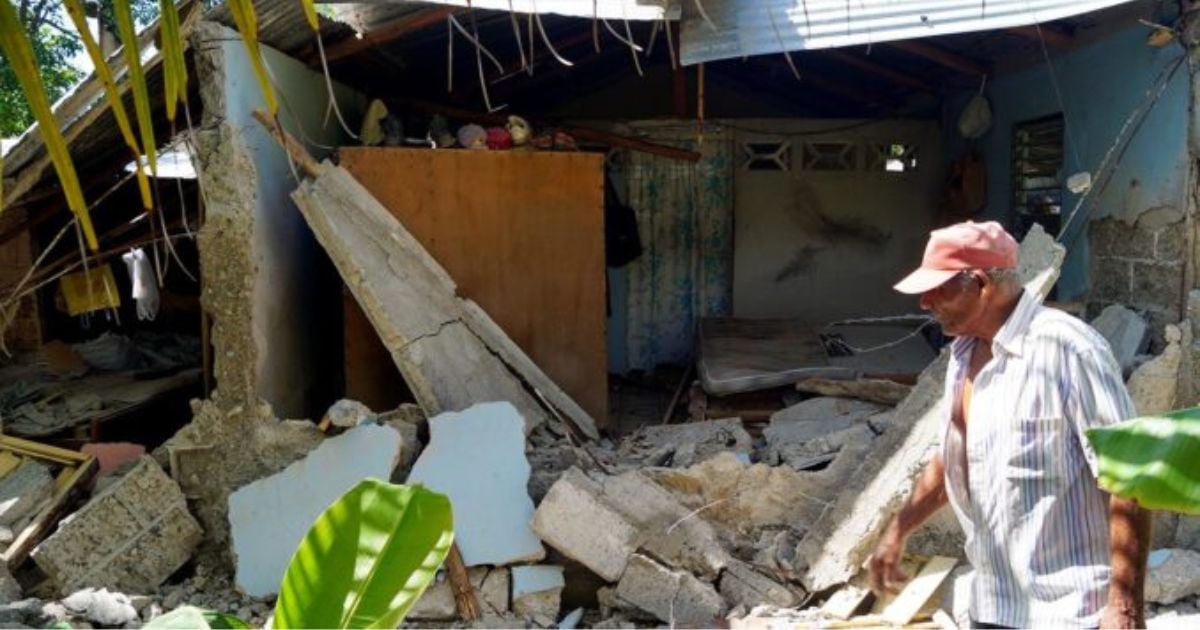
After the National Seismological Service recorded 1,799 earthquakes in the past 48 hours, including a precursor earthquake of magnitude 6.0 and a main event of 6.7, various opinions have circulated among the population, such as the belief that this seismic activity could be related to the passage of hurricanes or the activation of thermoelectric plants.
Eberto Hernández Suró, an engineer in geology and seismologist with over three decades dedicated to the study of seismic activity in the country, particularly in Granma, stated to La Demajagua that "the movements of tectonic plates are the primary cause of these tremors."
He also noted that "external factors, such as recent hurricanes, do not influence the occurrence of earthquakes."
Nevertheless, he acknowledged that there have been discussions in the past regarding the potential interaction between climatic and seismic events. However, he emphasized that "the general conclusion is that seismic phenomena are tectonic in origin and that any coincidence with other natural events is simply that—a coincidence."
The expert recalled that the area of Chivirico and Pilón, known for its high seismic activity due to the instability caused by rock fractures, has a history of earthquakes dating back to 1553.
The aftershock period can last days, weeks, or even months, Hernández explained. He added that although the number of tremors is high, the energy they release is limited, and their impact on the population is generally low.
The perception of these events depends not only on the magnitude of the earthquake but also on factors such as proximity to the epicenter and the positions of individuals at the moment of the tremor, whether they are lying down, standing, among others, he noted.
On the other hand, despite the damage caused by the earthquakes located southeast of Pilón, the expert stated that they are classified as moderate in magnitude.
“In the province, we have historically experienced other similar events or those of lesser magnitude. I remember on January 28, 2021, the 7.1 earthquake near the Cayman Islands, which was felt quite clearly throughout the region,” he emphasized.
Regarding recurrence, defined as the time that elapses from a strong earthquake until another of similar magnitude occurs, it was noted that “the Bartlett Caiman area, where these epicenters are located, can generate earthquakes of even greater magnitude. These are regions that have experienced a long period of recurrence.”
He also explained that "the recurrence time in the Chibirico-Pilón and Pilón-Cabo Cruz areas has been quite long; the longer it is, the more energy accumulates. Therefore, it should be expected that when such an event occurs, it will be of significant magnitude."
Among the opinions circulating within the population, the notion stands out that certain factors can make earthquakes more damaging. There is debate on whether an event is more intense at greater depths, closer to the sea, or on land.
The seismologist explained that the level of perceptibility of a seismic event, which defines its intensity, is influenced by various factors, with the distance from the epicenter being one of the most significant: the further one is from the source of the earthquake, the less one will feel the seismic wave.
"Another important aspect, which is a major concern in the province, especially in the cities of Bayamo and Manzanillo, is soil quality, as weaker soils can amplify the intensity of seismic waves, thus increasing the impact of earthquakes in these areas."
Hernández explained that the composition of the land in these cities, consisting of clay and sandy soils, tends to behave unfavorably during an earthquake, amplifying the perception of the event.
In contrast, solid and rocky soils tend to attenuate seismic waves, acting as a barrier that reduces their energy. Therefore, the geographic characteristics of each location are crucial in how earthquakes are experienced.
He mentioned that the depth of the seismic event is another determining factor, and in that regard, he clarified that he is referring to the location where the rupture in the rock occurs, known as the hypocenter, whose projection on the surface defines the epicenter.
"Surface seismic events, although not always of great magnitude, can be catastrophic, as they require less energy to produce an intense impact. In the Bartlett Caimán area, earthquakes generally occur at depths of between 10 and 20 kilometers; however, those recorded at a depth of five kilometers are more concerning because they can cause significant damage with very little energy."
Finally, the seismologist stated that "in Cuba, it is estimated that a significant earthquake occurs approximately every 80 to 90 years. We have received an additional two years of grace, as 92 years have passed since the last major event in Cabo Cruz, which increases the concern that the accumulated energy in the subsurface is reaching a critical point."
"The accumulation of energy in the tectonic fault is a significant risk factor. Research shows that the region is charged and that the lateral movement of the plates is constant, suggesting that this energy cannot be held indefinitely. A release is likely to occur at some point, emphasizing the need for preparedness and awareness of the seismic potential in the region," he stressed.
On Monday, Dr. Enrique Diego Arango Arias, head of the National Seismological Service of Cuba at the National Center for Seismological Research (CENAIS), responded to the statements made by American geologist Grenville Draper regarding the recent seismic events recorded on Sunday southeast of Pilón, in Granma province.
Draper, a researcher at Florida International University (FIU), made several statements to Telemundo 51 in which he asserted that "there is a main earthquake followed by smaller tremors. So others may follow. I would advise residents to try to avoid being in buildings that could be damaged by the first major quake."
He also said: “There may be small tremors. Generally, the pattern is that there are smaller aftershocks. Occasionally, there may be larger aftershocks, but that's not very common.”
These statements prompted Dr. Arango, with decades of study and dedication to seismology in Cuba, to make some clarifications.
"Never is a replica greater than a main earthquake. It is incorrect to say this. The 6.0 magnitude earthquake was a precursor to the subsequent 6.7 earthquake," stated Arango.
On the other hand, the head of the National Seismological Service of Cuba stated that CENAIS has “a team of specialists from various fields, such as civil engineers, geologists, seismologists, etc., with sufficient knowledge to handle this situation,” suggesting that recommendations for managing the current seismic crisis would be more effective if made by Cuban specialists.
Filed under:

